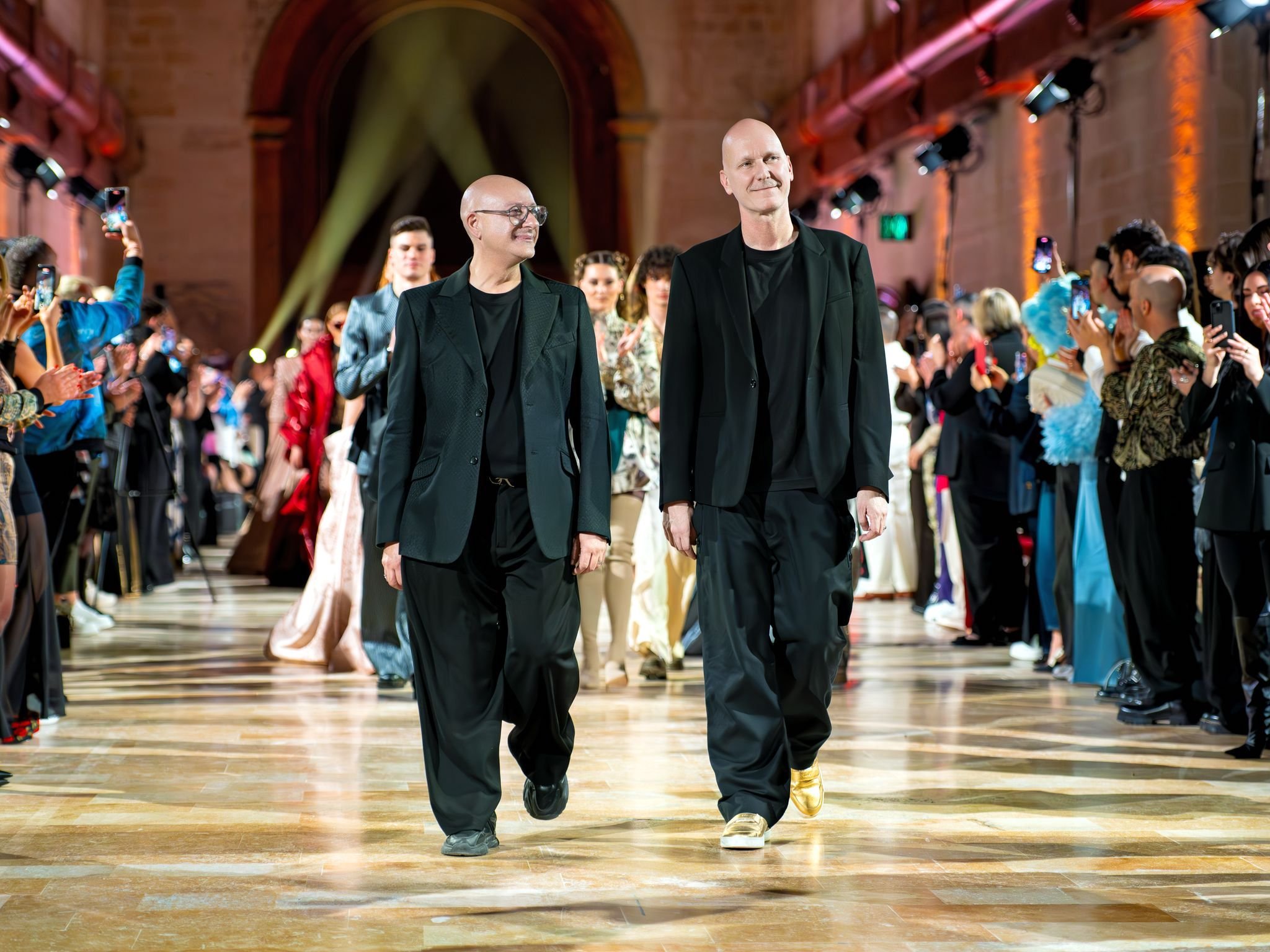Greenwashed! An architect's guide to spotting the difference between sustainable design and smart marketing.
In an age of eco-hype, architect Andrea Bianco exposes the truth behind Malta's so-called "green" properties. With misleading marketing, weak standards, and outdated certification systems, buyers must look beyond buzzwords. This feature offers clarity, questions to ask, and guidance for making smarter, more sustainable, and truly green property investments.
The green property illusion
In Malta's real estate market, the terms "green" and "sustainable" have become powerful - and sometimes misleading - sales. Developers often highlight features like double glazing, wall insulation, or photovoltaic panels to signal eco-consciousness and justify premium price tags. But are these properties truly sustainable, or just dressed up to look that way?
The recent release of the Housing Authority's First Time Buyers Guide provides invaluable insights on financing and purchase logistics for property buyers. It is considered a great initiative to improve real estate transparency. However, it barely scratches the surface of what makes green real estate locally. The guide mentions sustainable features and several available green incentives but stops short of helping buyers understand whether a building is genuinely "green."
So, many are left asking: What truly defines a green property, and why is buying green important?
Malta's green trend
The increasing availability of green investment products (like preferential "green loans"), alongside updated regulations such as the Building Construction Agency's revised Technical Document F, has created a fertile environment for marketing sustainability and so-called "green buildings." However, there is still no clear, enforceable definition of what a green building actually is in Malta.
This ambiguity is compounded by Malta's limited transparency in its real estate sector, as confirmed in PWC Malta's 2024 report on Real Estate Transparency in Malta (conducted in collaboration with JLL and Archi+). The report also highlights the country's scant adoption of sustainability frameworks and practices.
Consumer interest in sustainability is growing despite the absence of regulation. Sustainability is increasingly being taken into account by Maltese real estate buyers, according to several studies that have seen a growth in buyers willing to pay more for sustainability factors, from 23%, according to a 2023 KPMG Malta study, to 59%, according to a 2024 PWC Malta study. The above illustrates increased awareness and persistent uncertainty, as verifying the green credentials of a self-proclaimed 'green building' falls on the buyer.
What green really means: from an architect's perspective
A green building must go beyond energy-saving appliances and tick-box design solutions. It should:
Be energy and resource-efficient
Produce low carbon emissions throughout its life cycle at both construction and operation phases
Minimise environmental impact throughout the building's entire life cycle
Contribute positively to human health and wellbeing
Be climate-change and environmentally risk resilient
The Royal Institution of Chartered Surveyors (RICS) describes a green building as energy and resource-efficient and performing well in carbon terms. Building on this, several international Green Building Councils also include social and health aspects in their definition of green buildings. A green building follows sustainability principles and should cater to its environmental impact, occupant health and comfort, climate resilience, and future adaptability.
Without robust building standards, superficial guidance documents, and an outdated local certification system that measures energy use and basic carbon dioxide emissions, Maltese developers may rely on selective features to signal sustainability. Buyers must, therefore, look deeper.
Due diligence: the architect's green checklist
When involved in a property purchase, here's what an architect evaluates when assessing green credentials:
Design and Orientation
A building's positioning relative to its geographic characteristics affects indoor comfort and long-term energy use. Here, passive design principles (examples include cross-ventilation and thermal mass) and clever building orientation should work together to minimise the energy needed to control internal conditions.
Building Fabric
Building materials directly impact durability, thermal performance, and embodied carbon (carbon emissions to extract and produce material). The building fabric includes walls, roofs, floors, doors, windows, etc., and helps maintain a building's internal conditions. It also significantly impacts carbon emissions, accounting for 11% of global carbon emissions from the building industry.
Building Systems
Even well-insulated buildings can be inefficient if their systems are outdated. Heating, cooling, lighting, and water heating systems must be modern, automated where possible, and scaled to the property, particularly if such systems may have reached obsolescence. However, efficiency doesn't always mean a total overhaul of the installed building systems - sometimes, it's about smart, targeted improvements.
Renewables
One cannot discuss green buildings without discussing renewable energy. Malta has the EU's lowest share of renewable energy in its consumption mix at 7.7%. The most common renewable energy system available is the rooftop photovoltaic system. However, what other systems can be implemented in apartment complexes where residents may have limited access to roof space? Options could include communal PV systems or shared renewable installations supported by government incentives, although these options remain limited.
Water Management
Freshwater is a limited resource in Malta, where we rely heavily on energy-intensive reverse osmosis and groundwater extraction. Climate change will continue to stress these systems. Does the building use its rainwater well beyond storage, for flushing or irrigation, for example? Is there a greywater reuse system? Buildings that take water seriously will be more future-resilient and cost-effective.
Health and Wellbeing
Good indoor air quality, natural light, thermal comfort, and acoustic performance affect health. Is the building prone to humidity or mould? Are the materials non-toxic? Are spaces adaptable for different uses and users? A building can't be called Green if it's uncomfortable, unhealthy, or unusable, particularly if these conditions become so over its lifespan. For more information on the social aspect of sustainability, I recommend reading Nicole Grima's article in Money magazine, issue 80, The 'S' Factor.
What buyers should ask: And when to call in an architect
Two frequent questions I hear are:
How do I know if a property is really "green"?
When should I get an architect involved?
The short answer to the second question is as early as possible - ideally before committing to a promise of sale. The earlier you engage a professional, the more leverage you have to uncover hidden problems or verify a building's green credentials.
The first question is trickier. In Malta, the Energy Performance Certificate (EPC) is legally required for all property sales and includes metrics like estimated energy use and carbon dioxide emissions.
However, the EPC system presents serious flaws. It is based on outdated software and contains limited inputs focused on energy efficiency for heating demands rather than cooling demands necessary in Malta's climate.
The program used to calculate EPCs has remained unchanged since its introduction in the late noughties. It contains minimal input fields based on several extremely simplified assumptions that are no longer relevant. The program is alson't always easily accessible unless the seller provides it. Considering the definition of a Green Building, Malta's EPCs fall short of identifying green buildings.
What about green certificates? Certifications like LEED or BREEAM have been used locally for large-scale projects (e.g., Trident Park, The Quad) but rarely apply to small developments or individual homes. Other standards, such as Passivhaus, exist but remain uncommon in Malta.
So, what should buyers do? Here are some practical steps:
Request the EPC before signing any Promise of Sale Agreement and ask for an explanation of the rating. Banks will also require this for loan approval.
Ask for the age and efficiency of major building systems such as air conditioning, ventilation, water heaters, and lighting.
Ask whether insulation has been installed on roofs and walls and what type of apertures have been installed. If you can't confirm the presence of insulation, it may be absent.
Assess daylight and ventilation. Is there sufficient cross-ventilation? Are rooms naturally lit or overly dependent on artificial lighting?
Look out for signs of dampness or mould, particularly in basements or corners of rooms.
Inquire about water reuse. Does the property use the well water? Have any greywater systems been installed?
Ask what sustainability certifications apply, if any.
Consider future-proofing. Is the property adaptable? Can it address changes in regulations, rising temperatures or lifestyle needs?
These questions may seem technical, but a short consultation with an architect can provide clarity.
A green building is a smart investment
Green buildings aren't just good for the environment—they're good business. According to Grant Thornton's 2023 Malta Property Report, a €200,000 sustainable apartment could generate up to €43,000 in long-term value over 30 years—nearly half of which is realised in the first five. With EU energy regulations tightening and Malta's 2050 carbon neutrality target looming, choosing a green home isn't just smart—it's essential.
With Minimum Energy Efficiency Standards likely to arrive and more green grants from local governments and banks entering the market, Green Buildings are no longer a niche—they are the new normal.
For buyers, the message is clear: do your homework, ask the right questions, and engage the right architect early in the buying process. Engaging the right architect early in the buying process is one of the smartest steps. Regarding sustainability, what you don't know can cost you. What you do know can ensure your investment is future-ready, regulation-proof, and genuinely green.




















Alliance is more than a real estate company—it's a leadership blueprint. MONEY speaks with the ten figures behind Malta's most people-driven property brand to uncover how strategy, culture, and sustainability are shaping their future and ours.